
Memorable encounters with Mammals Part II
It’s generally reckoned that there are more deer in Britain today than there were in the Middle Ages, a fact that is almost certainly true. There’s also a much greater variety of species of deer living here now than than there were four or five hundred years ago, for along with our native Roe and Red Deer we also have large populations of Fallow, Sika, Reeves’s Muntjac and Chinese Water Deer. Fallow have been present in Britain for many hundreds of years, but Sika, Muntjac and Chinese Water Deer are all relatively recent arrivals.



I see Muntjac on virtually every birding (or dog-walking) outing, as these small Asian deer are now very numerous around my home in the Suffolk Brecks. England’s Muntjac are all descended from a small number of animals released by the 11th Duke of Bedford in his park at Woburn, in Bedfordshire, in the early years of the 20th century. The first escapes from the park took place in 1922, and during the next 50 years they slowly established themselves in the counties of middle England. In recent years the population has exploded, and today there are many thousands, possibly tens of thousands, of these diminutive deer in England. They have reached Wales, while they are heading for Scotland fast.
Like many non-native species, they have had a detrimental impact on their environment. They are low-level browsers, destroying the favoured nesting habitat of Nightingales, a scarce bird on the northern edge of its range here in England. As a result, Nightingales have completely disappeared from many woods where they were once found, and the population continues to decline as numbers of Muntjac rise. Muntjac venison is very good to eat, but despite this, not many are shot. Rather more are killed in collisions with cars.

Of all our deer, much my favourite is the Roe, a graceful and attractive species. It’s a common mammal in the countryside around my home, and I see them frequently. There’s also a strong (and growing) population of Red Deer, though I encounter them less often. There are no Sika in my region, but Chinese Water Deer are steadily expansing their range and I now see them regularly.



When birding abroad, I’ve seen Roe in many different countries, from France to Greece. I’ve encountered Red Deer in almost as many countries, too. The Spanish stag shown here I photographed in the Parque Nacional de Caberñeros in central Spain. I saw a number of mature stags during my visit to the area, and all had similarly distinctive and attractive antlers. The only place (outside England) where I have seen wild Fallow Deer in Europe is in Spain’s Coto Doñana, where they are numerous.
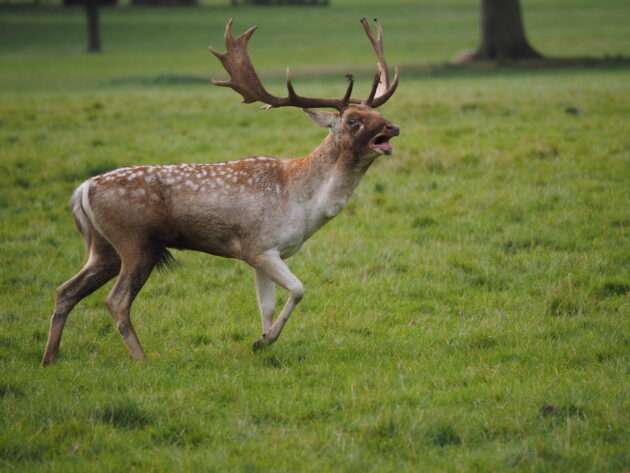
Elk (or what the Americans call Moose) I’ve encountered several times in Scandinavia, Estonia and Poland. The world’s biggest species of deer, they are curiously ugly but impressive animals. I’ve only seen European Bison in Poland, in the Bialoweiza Forest. On one occasion I was out at 4am on a May morning as my guide had promised to show me a small herd of Bison grazing outside the forest. We had been watching them for a while when the farmer on whose land they were grazing scared them back into the forest with fire-crackers. He complained they were eating the grass he wanted for his horses. It would have made more financial sense for him to erect a hide for observing and photographing the Bison, and charging tourists for the privilege of using it.

According to my mammal guide, there are two species of chamois in Europe, the Pyrenean Chamois (which also occurs in Central Italy), and the Alpine Chamois. I’ve seen both (usually when looking for Lammergeiers or Alpine Accentors), but have yet to get a decent photograph of either. I’ve seen ibex a number of times, too: an easy place to see Spanish Ibex is in the Sierra de Grazelema Natural Park; I’ve seen herds of the the rather larger but similar Eastern Tur while looking for Snowcock in Georgia’s Caucasus Mountains.
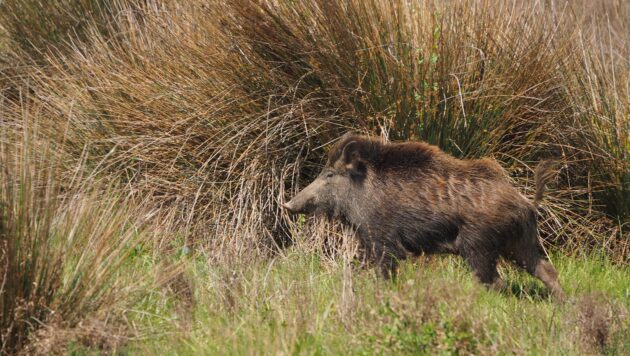

I saw my first Wild Boar in Spain’s Coto Doñana many years ago, though I’ve subsequently seen them in many other countries, too. Here in the UK they were exterminated 400 years ago, but in recent years they have become re-established as a result of escapees from farms. There’s a growing re-wilding movement in this country, but whether we really want Wild Boar back is another matter, for the re-established animals are not popular with the people who live alongside them. This isn’t an animal you want in your garden, or to meet on a road at night.
Another lost mammal in the UK now becoming re-established here due to re-introductions is the European Beaver. I’ve yet to see one in the UK, but I had a memorable encounter with one while birding from a small boat on a river in Lithuania. My lasting impression was how big the animal was. I’ve had many sightings of Nutria (we call them Coypu) in Europe, where this South American animal is now widespread. They were once well established in Eastern England, too, but a determined trapping operation successful exterminated them from the country 40 years ago. Successful elimination of a well established introduced animal is rare, but this proves that it can be done.



One introduced animal that we are unlikely to ever eradicate from Britain is the North American Grey Squirrel, a mammal I see nearly every day. First released into Britain 150 years ago, they have largely ousted the native Red Squirrel. I am old enough to have seen wild Red Squirrels in my home county of Suffolk, but they died out here 40 years ago. I always enjoy watching them when I see them in Europe: the individual above was in Estonia last March.


After Muntjac and Grey Squirrels, the mammal I see most often when birding at home is the Brown Hare. It’s an animal that I never tire of pointing my camera at, for they are such photographic creatures. Hare taxonomy is confusing, but I’ve seen Iberian hares in Spain and Portugal, Corsican Hares in Corsica (where else?), and Mountain Hares in Scotland and Scandinavia. Rabbits have become surprisingly scarce close to home, but I don’t have to go far to see warrens of them, with as many as 30 or 40 in one field.
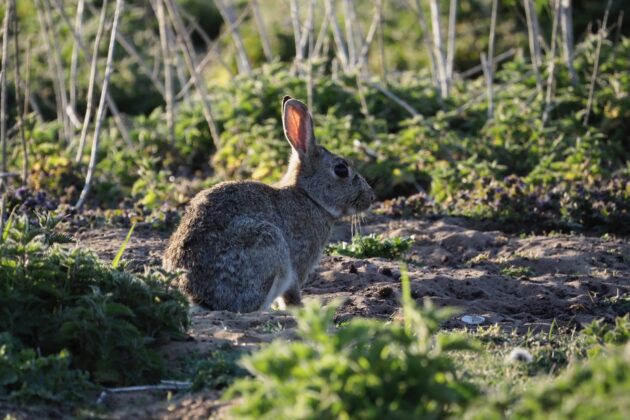
Over the years I’ve encountered a rich variety of smaller mammals, too, ranging from Alpine Marmots to European Sousliks, Moles to Hedgehogs, plus an assortment of mice and voles. The latter are challenging, as for certain identification you really need to trap them.

I’ve seen lots of bats, but bat identification is tricky, even when armed with a bat detector. A few are easy, such as the Egyptian Fruit Bat, the largest bat we have in Europe. I’ve seen them in Cyprus. At home, I always enjoy seeing Noctule Bats when I go out looking for Nightjars and Woodcock on spring evenings. They are big, impressive bats that fly high. I’ve never knowingly seen the Greater Noctule, a species that is apparently a predator of migratory birds that it catches on the wing. It doesn’t occur in Britain.
Though birds may be my principal interest, encounters with mammals invariably add interest and sometimes excitement to any birding excursion. And there are still some mammals I’d really like to see, such as the Russian flying squirrel that can be found in Finland and Estonia, or the mysterious Pyrenean Desman, which looks like a shrew but is more closely related to the Mole. However, top of my wanted list is a European Lynx. One day, perhaps.




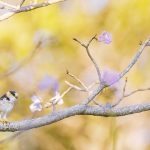




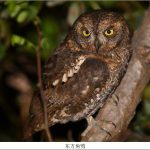

David, I share your affection for brown hares. We are pleased to observe up to 20 at one time from our kitchen window each spring. As for the Mountain Hair, I have been fortunate to see many sporting their winter attire on Kinder Scout in the Derbyshire Peak District.